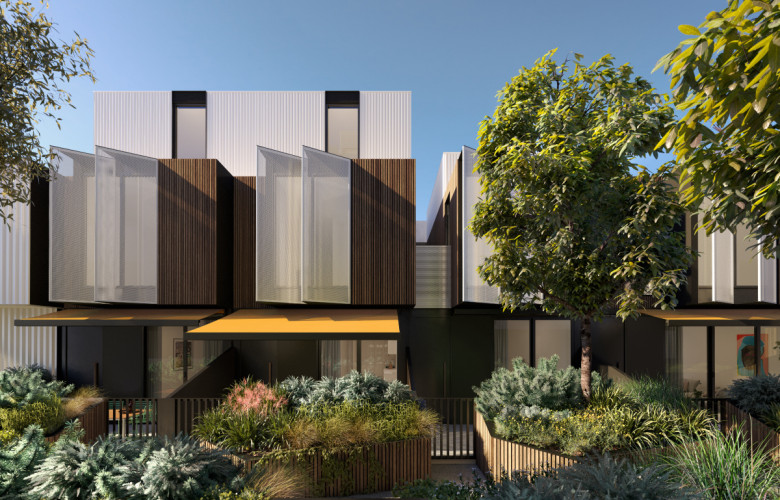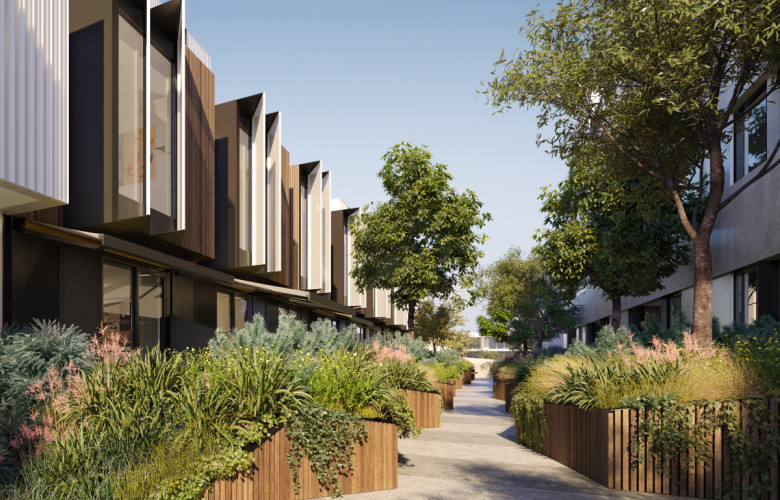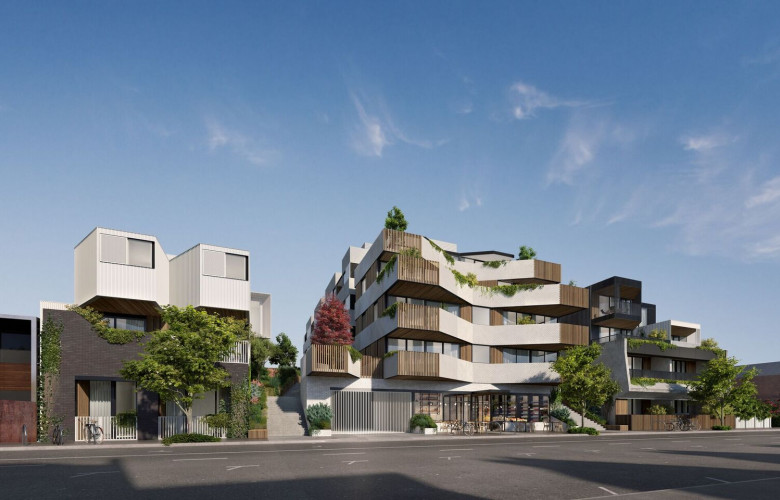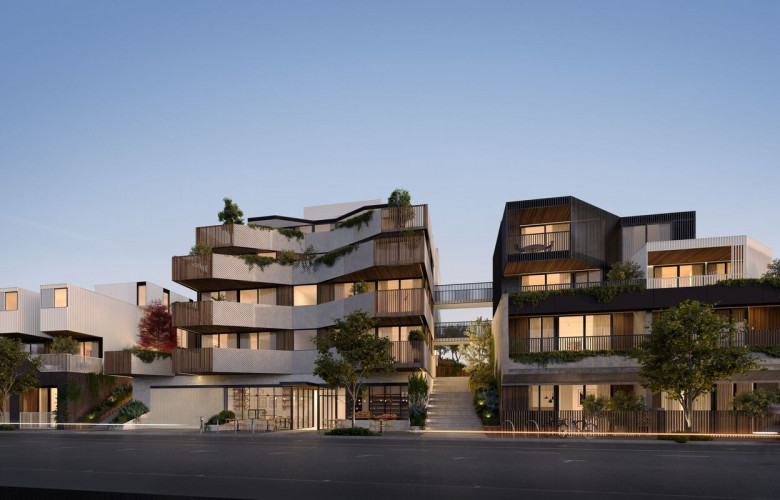The builders asking what you want and what you need
Contact
The builders asking what you want and what you need
“People are really starting to understand the benefits of living in these inner-city lovely areas, living in smaller, better thought-out, lower maintenance spaces.”
Australians love big houses, with our homes on average measuring 214 square metres, but a team of developers in Melbourne hope to show that bigger doesn’t always mean better.
Wulff Projects, Icon Co and Melbourne-based residential property developers Assemble have designed a project consisting of small footprint living spaces by asking prospective buyers exactly what they want. At 122 Roseneath Street in Clifton Hill in Melbourne’s inner north, the three development partners will build 49 apartments and 18 townhouses, over six storeys on a 3020-square metre parcel of land.
Apartment offerings will range from 38 square metre studios to 150 square metre townhouses, with two parks covering almost a third of the site. The development will also feature a native landscape garden, a multi-purpose room, a small edible garden and a ground floor cafe. It will have solar hot water systems and rainwater collection for the communal green spaces.
"The Melbourne apartment market is really immature in global standards," says Icon Co development manager Kyle Reeve. "It’s gone through a big boom recently but prior to that there haven’t been a lot of people in apartments."
Assemble architect Quino Holland said the project was unique in the way prospective residents were being consulted through the design process. "We’re always being told by agents and proxy marketers what people want but rarely are people asking prospective purchasers in detail what they’re after," said Holland.
Through a series of consultation nights, the partners have asked people questions including how many bedrooms and car spaces they wanted, and whether they’d be willing to pay extra for additional features.
"We asked them whether they’d want to have one or two bathrooms in a two bedroom apartment, or whether in exchange for that second bathroom they’d want more living space," explains Holland. "We also asked the level of interest in a number of options (a premium kitchen versus a standard kitchen) and a number of extras." These extras include large sliding doors to make a second bedroom into a flexi room, ceiling fans, blinds, the provision for a dog door, and a children’s bath under the shower.
Reeve said some buyer feedback was surprising, and cites air conditioning as an example. "A lot of the responses were ‘We may not necessarily want it but we want to be able to put it in later,’ and that put us in a really awkward position because to install provisions for air-conditioning is obviously 90 percent of the work," explains Reeve. In the end, they decided to install air-conditioning but provide buyers with the option of ceiling fans if they prefer those.
People also asked about the sustainability of building materials. "It was really a key feature that a lot of people were really interested in," says Reeve. "And they’d be willing to pay for it."
Adds Holland, "It seems that purchasers are getting very educated out there, they’re asking very detailed questions. We’d heard that but [the consultation process] certainly proved it."
Asked why more developers don’t take this consultative approach, Reeve said, "That’s a very simple answer. It’s very hard and very time consuming to do. You can imagine asking 500 people their thoughts and ideas. If you’re a developer and you say, ‘Let’s just do what John Smith did down the road, it worked for him,’ you don’t spend four, five months having conversations with people."
Holland believes the timing is right for such a project as the market shifts from investors towards owner-occupiers. "I think the market is pretty clear what investors want, and I think the market is less clear on what owner occupiers want, so we’re trying to be at the forefront of the owner occupier push," he said. "People are really starting to understand the benefits of living in these inner city lovely areas, living in smaller, better thought-out, lower maintenance spaces."
While time consuming, the lengthy consultation process may save on advertising to prospective buyers. Holland said that if they were able to sell most of the apartments through this process, then they wouldn’t have the need to take a more conventional marketing campaign to sell them.
"The intention hasn’t been ‘let’s do this because we can make more money out of it,’ it has been very much ‘how do we engage with these people and build what they want?’" said Reeve. "It isn’t just another development, we want likeminded people living together. By having conversations with people we can create that community."
Asked how to convince Australians to embrace a smaller living space, Holland says it comes down to design. "One of the trade-offs is a reduction in space and outdoor amenity in order to live in these areas that everyone wants to live in, inner city areas," he says. "There’s a pragmatic reason for living closer together, for small footprint living, but it really comes down to how much love is put into the design, how much thought is put into actually making spaces really appealing to be in. Making sure there’s really great natural light, and making sure these spaces feel like a place you actually want to be in."
The project has an emphasis on shared spaces with the common gardens and a communal workshop area to for painting a chair or fixing a bicycle. "Even if you live in one of the smaller studios and you want to throw a party, you’ve got that amenity there," said Holland. "You can live a full life in this building, you shouldn’t be limited by the fact you’re living in an apartment, so you can do everything you can do if you’re living in a Victorian terrace house across the road, for example."
Holland said the project is “definitely not” just for young people. "We’re trying to create real diversity here and it’s interesting to see who’s been registering and who’s been coming to the design presentation. It’s a real genuine mix of people from all ages, from young professionals in their early to mid-twenties all the way up to downsizers. We’ve had quite a lot of older couples and singles interested. Interestingly enough, they’re not just interested in the larger apartments."
See also:
Our idea of 'luxury' has evolved








